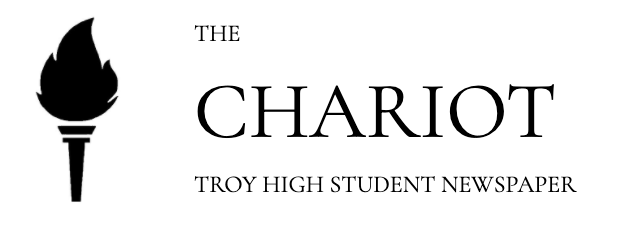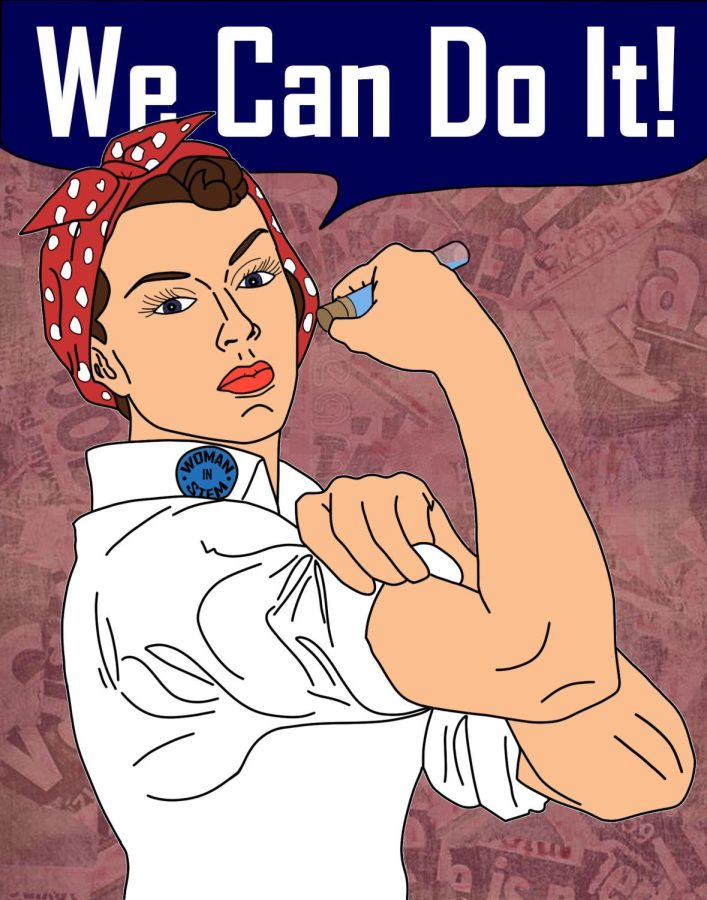Your donation will support the student journalists of Troy High School - MI. Your contribution will allow us to print our work, purchase equipment and cover our annual website hosting costs.
Imbalance and Inequality: The Exclusion of Women in STEM and Politics
The gender inequalities within STEM and political careers extend beyond the workforce, leading back to Troy High School.
March 21, 2023
Women make up less than 30% of people working in science, technology, engineering and math, or STEM, careers. Globally, they hold only 26% of lawmaking positions despite making up about half of the world’s population. What is the reason for this shortage of women taking up careers in STEM and politics?
Junior Aanya Shah narrows in on one particular field to discuss the possible reasoning behind this inequality. “If you look at fields such as computer science, you see that less than 18% of computer science bachelor’s degrees are held by women. That narrative is shifting a lot more, but there is still so much of a stigma surrounding women who go into computer science just because it’s known to be such a male-dominated place and women can feel very intimidated.”
This imbalance isn’t just in the job market: many of Troy High School’s elective STEM classes also have fewer women than men. When asked whether this contrast was reflected in her classes, senior Shreya Srugaram said, “100% . In my AP Economics class, there’s literally only three other girls.”
Srugaram continued, commenting on the reason for this lack of representation. “In general, I haven’t seen a lot of women take AP Economics; I’ve seen them take regular economics. I think it’s because women tend to go into other careers.”
This observation is reflected in the real world. According to a culmination of studies collected by the United States Equal Employment Opportunity Commission, women are significantly less likely to go into STEM careers in comparison to their male counterparts, despite graduating with a bachelor’s degree or higher in a STEM major. Researchers found that women’s concerns were centered around gender bias, sexual harassment, lack of female role models, and unequal pay within STEM careers.
These inequalities are just as significant within politics. While women have been in the United States Congress since 1917, they currently only make up 27.9% of Congress. In fact, as recently as the 102nd Congress in 1991-1993, women made up only 7% of Congress. It wasn’t until 2013 that at least 100 women held congressional positions.
Despite this, women hold 44% of federal employment positions. They’re being hired, just not elected.
Ryan Werenka, the Advanced Placement Government and Politics teacher at Troy High School, reports on the status of women in politics at the local level in comparison to global involvement. “Troy, Oakland County, and the State of Michigan diverge from the 26% statistic. Women hold five of six seats on the Troy City Council. Women make up half of the Oakland County Commission, and women hold significant positions all throughout the State government.”
What happens when women are in these unequal positions? Srugaram commented on the role of women in STEM. “There’s a lot that women can bring to STEM. If they have the proper resources, I don’t see a reason that women can’t be just as successful. Looking at CEOs, you can see that, when there are women, more work is done. Not necessarily better work, but companies can go a lot further than they are now.”
Werenka agrees, elaborating on this same phenomenon within politics. “My perception of women in office is that they are more willing to take bold action towards addressing problems and are more willing to experiment with public policy solutions. Not to say that male officeholders couldn’t take bold approaches, but my perception is that male officeholders are more cautious and willing to abide by the status quo.”
Women may hold fewer of these positions, but their involvement is growing. Werenka sees this trend in politics. “We’ve seen historic numbers of women running for office over the past several election cycles and I expect that trend to continue. I think we’re going to see more women holding high governmental office in the coming years. It would not shock me to see a presidential matchup where both major parties nominate women.”
To support women in STEM, visit College Raptor. To support women in politics, visit Rutgers Center for American Women and Politics.

